Sky Paint Node Support
Terragen has long been able to load project and clip files exported from Terragen Sky Early Access. Now it also supports nodes created by the new Sky Paint tools recently introduced in Terragen Sky. This means you can paint, remove or manipulate clouds in Terragen Sky; export the project or clip file then load it directly into Terragen for further tweaking and rendering.
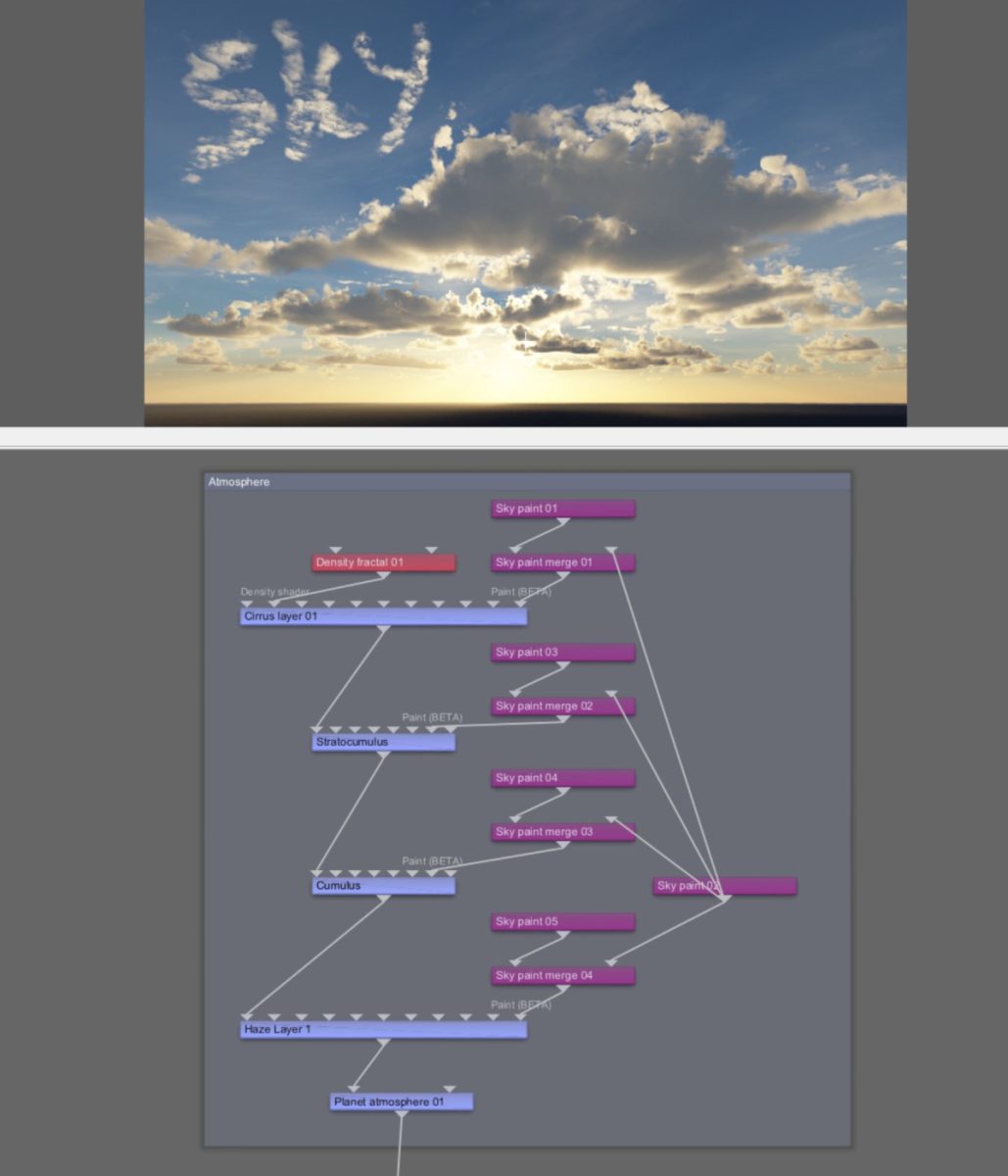
Threading Improvements
The hard-coded maximum of 64 threads per render has been removed. This allows utilization of more than 64 cores/hyperthreads on Windows 11, Windows Server 2022, Linux, and Macs with more than 64 cores. Older versions of Windows may not benefit.
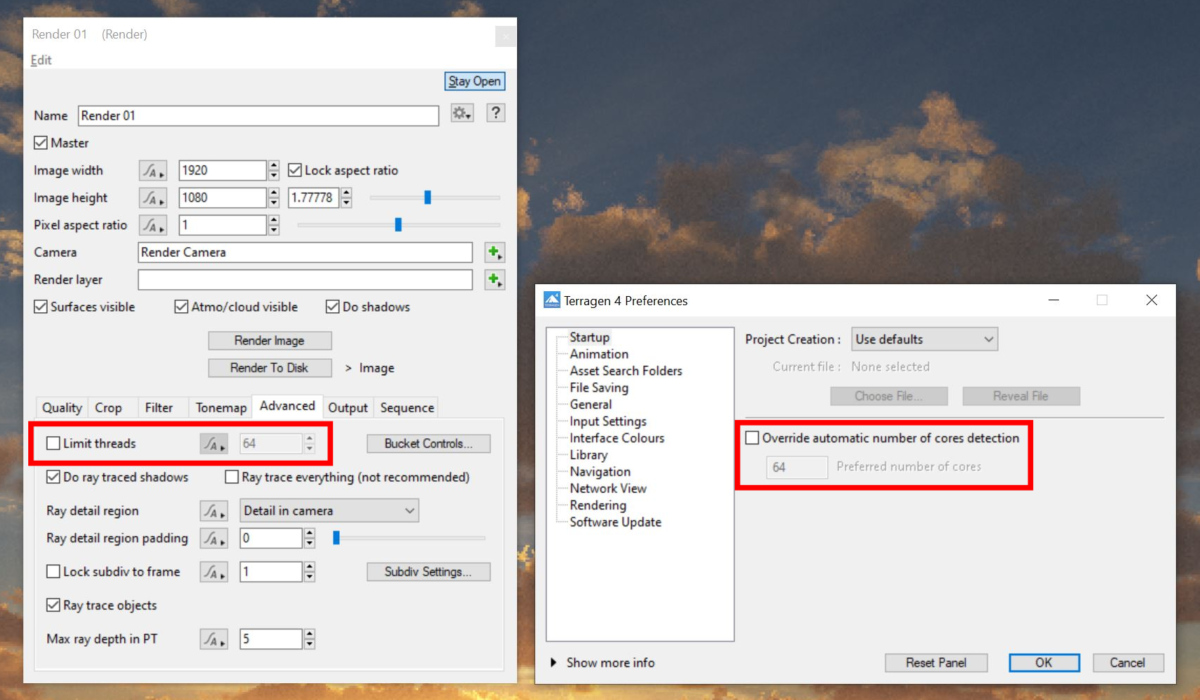
The Advanced tab on the Render node has a “Limit threads” checkbox which is OFF by default, but can be re-activated if necessary. The “Maximum threads” parameter is now ignored by default, and threading is decided by other factors such as the number of cores and hyperthreading detected when the app starts. This maybe overridden in Preferences, or a command line argument if used. The command line threads argument always takes priority if used.
Sticky World Space
The Transform Input Shader and Transform Merge Shader have a new option “Use sticky world space”. This allows shaders to work in world space on objects that have MDDs or mesh displacers, without the textures sliding when the objects are deformed.
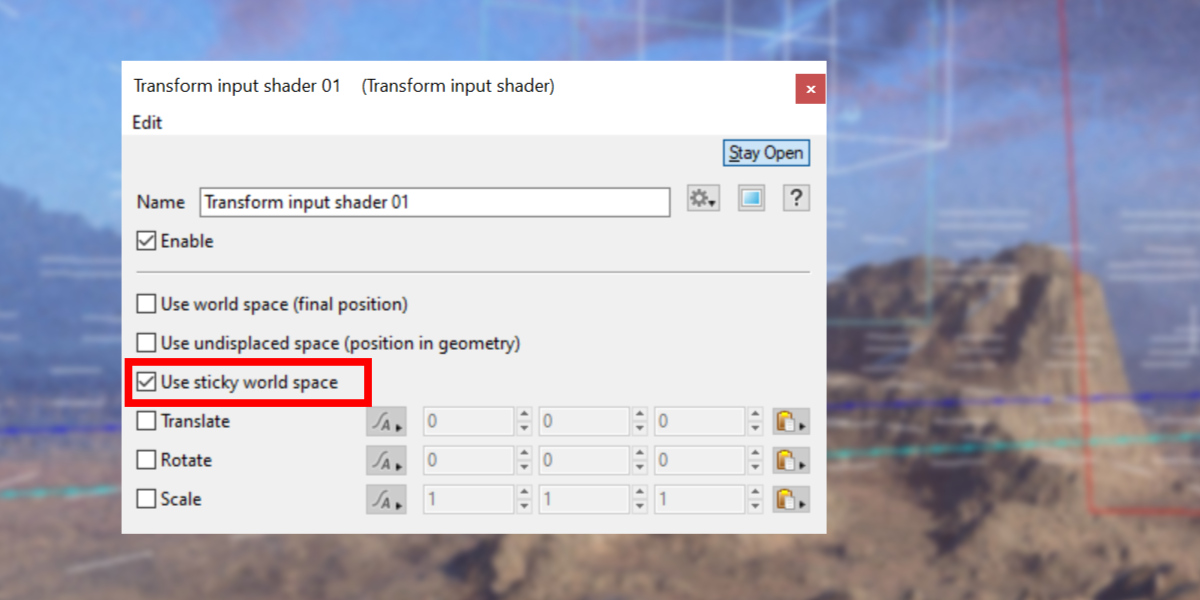
The Distance Shader has “Coord space” options which include “World space”, “Sticky world space”, “Undisplaced space” and “Terrain or Texture space (warpable and transformable)”.
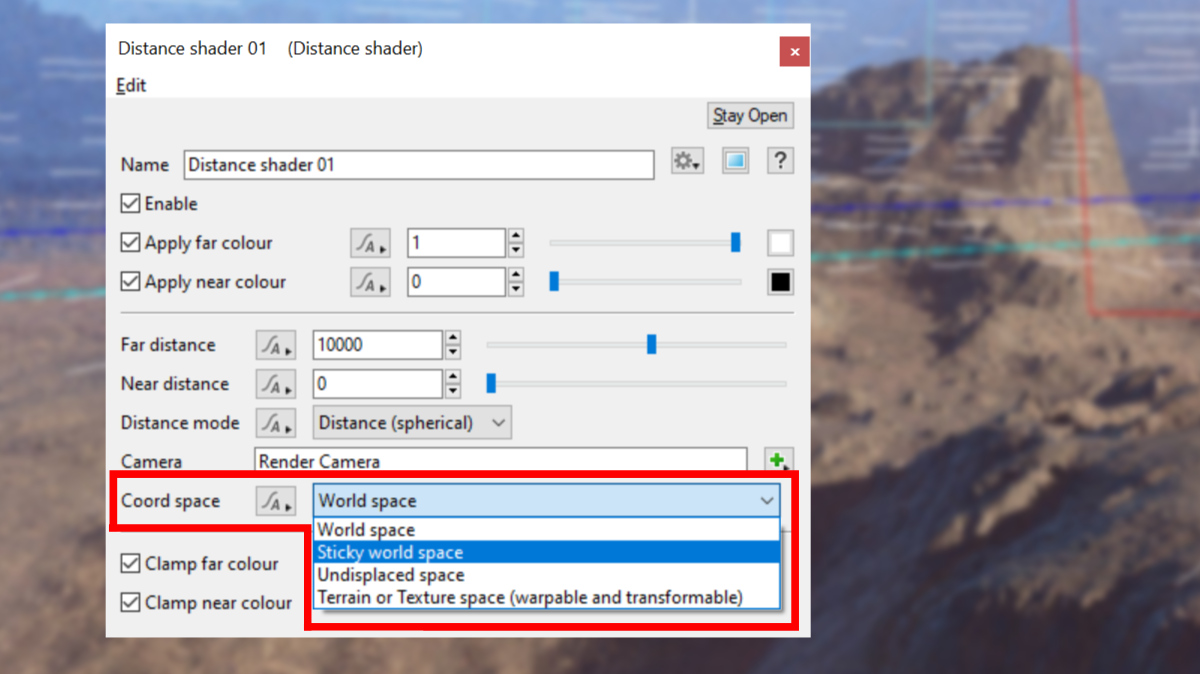
Heightfield Export
Heightfields can be exported to 16-bit TIFF and 16-bit “RAW” files that are compatible with Unity and Unreal Engine. The Free Non-Commercial edition can export resolutions up to 1025 x 1025 vertices (pixels). The Creative and Professional editions can export up to 32768 x 32768. In total, Terragen 4.8 can export heightfields to TER (preserving all scaling information), EXR (32-bit float preserving absolute height in metres), TIFF (16-bit unsigned short) and RAW (16-bit unsigned short) in addition to mesh export features.
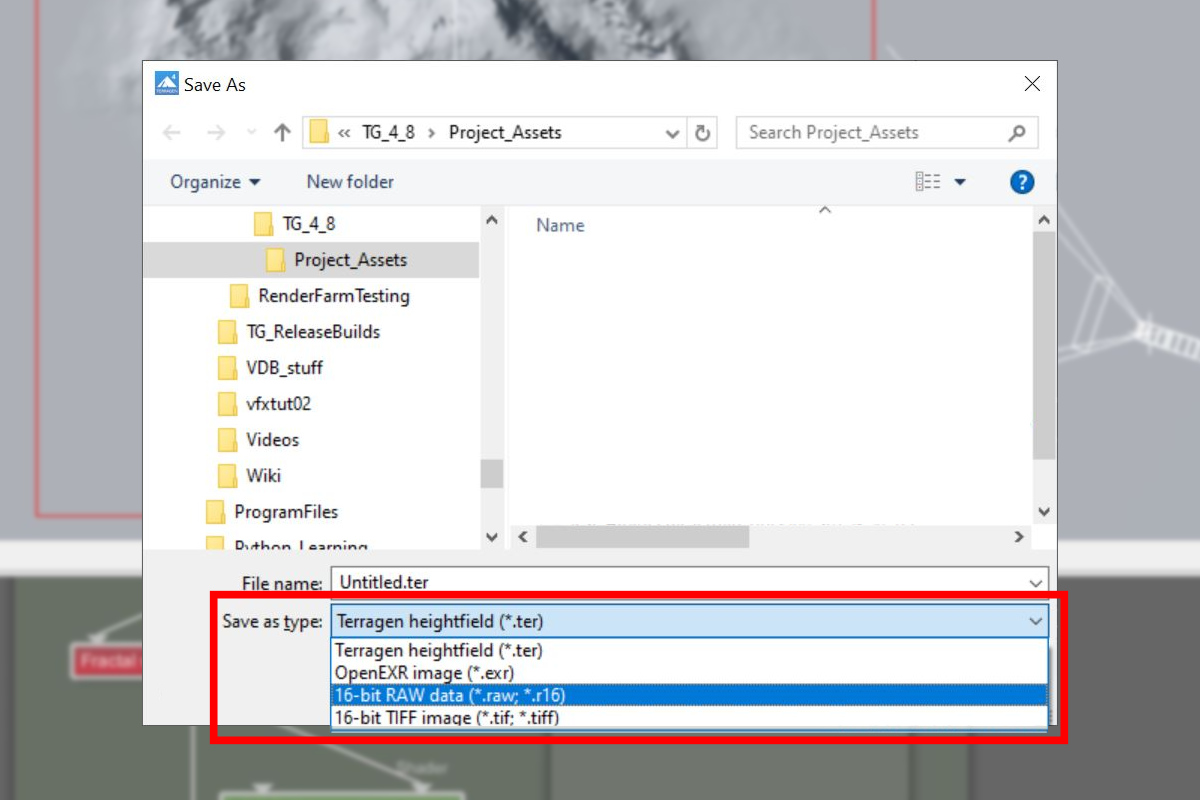
Heightfield Erode V3
This operator has new look! The GUI has been updated to separate the parameters into “Weight” and “Character” groups.
Even more importantly, the operator now includes a multi-threading option. This calculates erosion much faster, but may give slightly different results each time it is run. We recommend saving erosion results to TER files and loading those for consistent renders. The single-threaded option is still available for backward compatibility.
There is a new checkbox labeled “Fix gradient bug” to squash a bug and allow backward compatibility with Terragen project files saved from previous builds.
The flow of erosion at the borders of a heightfield can now take into account the options found under the “Border flow” setting. The calculations can “Stop” at the border or “Continue off map” or “Go around to opposite side”. Previous versions of Terragen used the latter option; so this version is fully backward compatible.
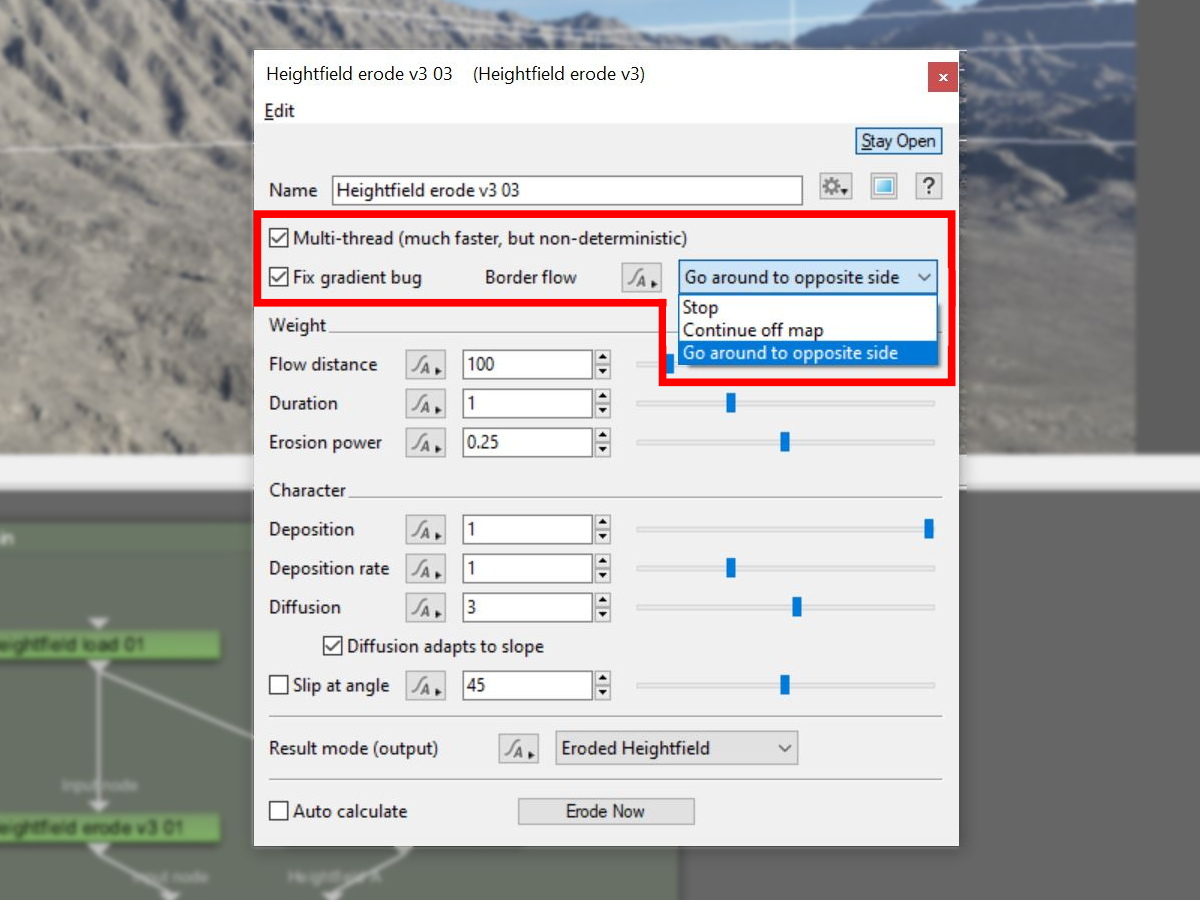
User Interface Updates
RTP shadows in the 3D Preview respect the shadow-cast settings of light sources and render nodes.
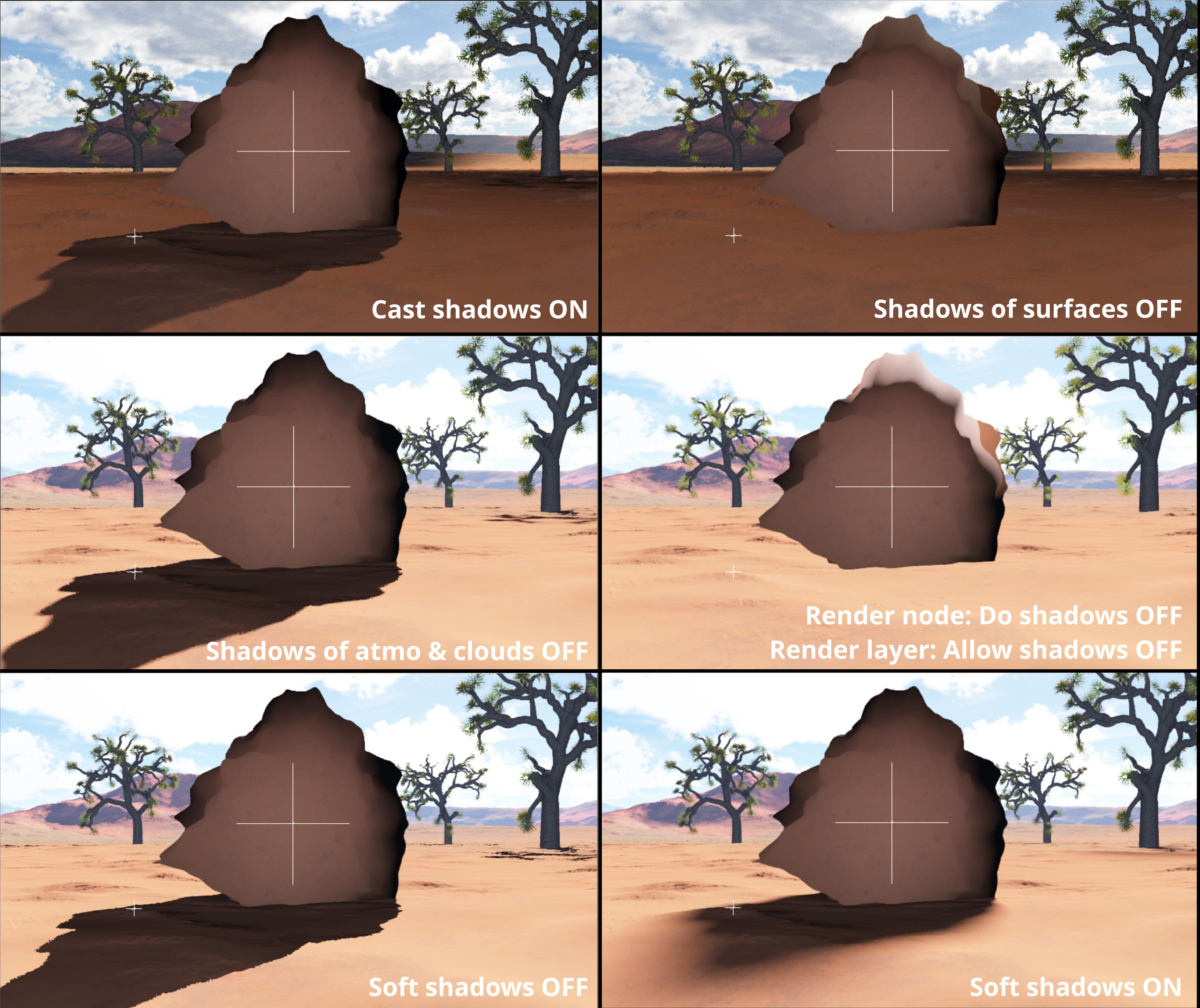
The colour of the rectangle and handles drawn in the 3D Preview to represent the crop region (ROI) can be changed in Preferences.
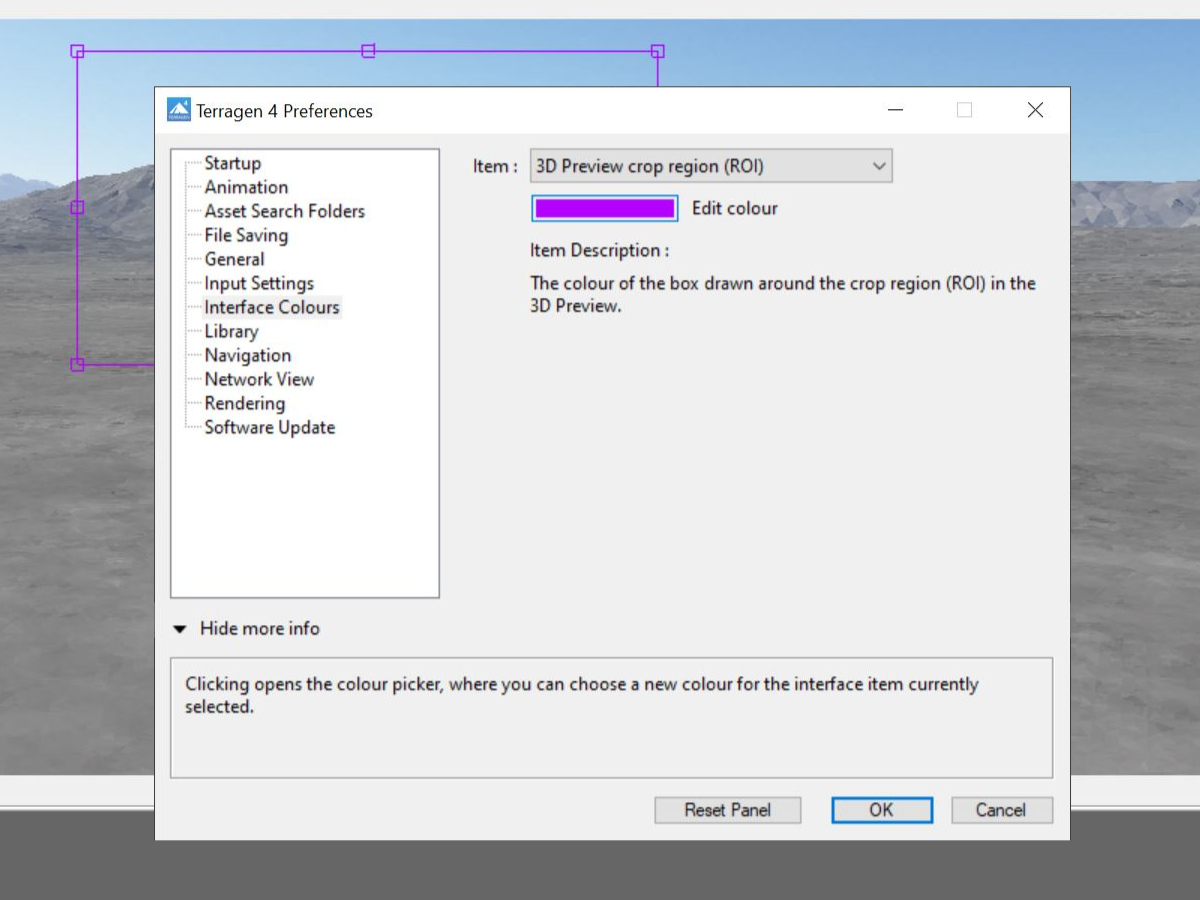
Clouds
We’ve improved the speed of interacting with scenes with cloud layers, especially when there are many layers. There was a bug that would unnecessarily invalidate some caches and cause voxel buffers to be recalculated when another cloud layer or atmosphere was changed.
Objects
Objects regenerate on every frame if they have a mesh displacer connected to them so animated deformations are easier to use.
Rendering
We’ve added the “-renderlayer” command line option. This allows you to assign any Render Layer to the render node being rendered via the command line, regardless if the Render Layer has been connected to the render node in the project.
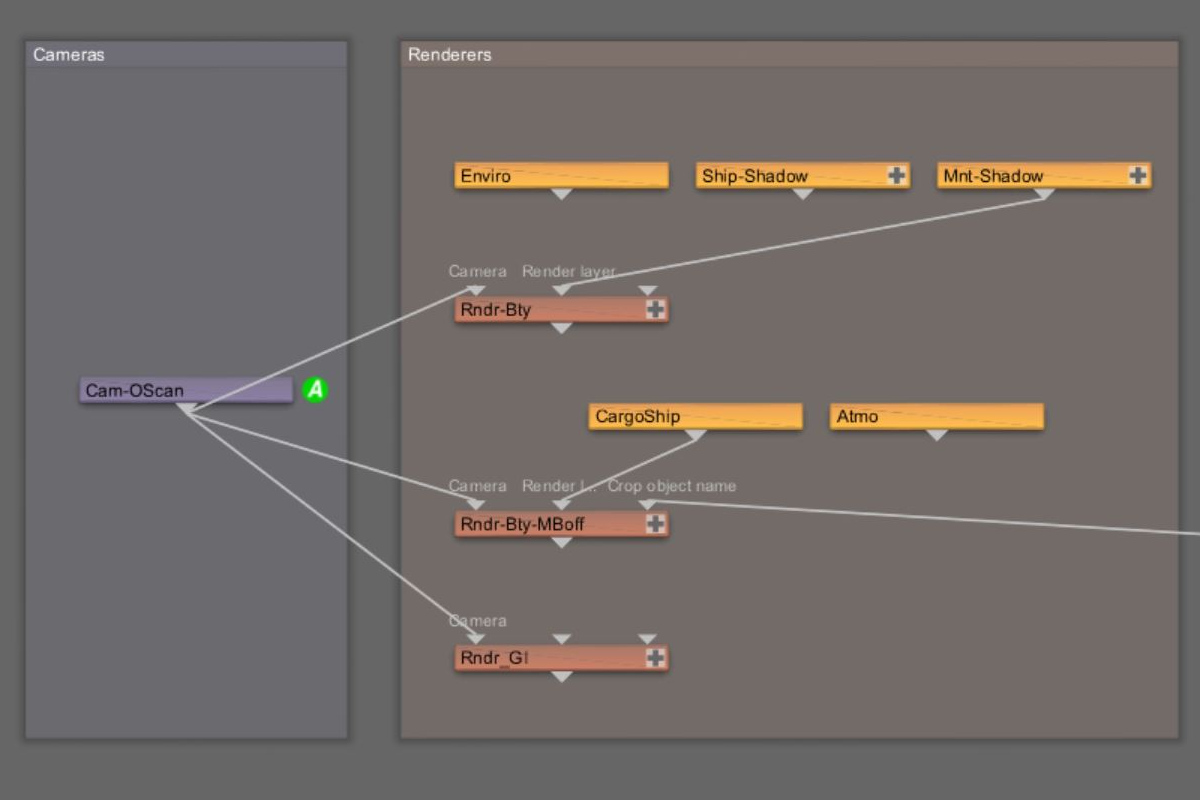
Pixel dithering is applied when saving 16-bit TIFFs just like it is for 8 bit formats, but with an appropriately smaller amount of dither. This applies to saving renders and exporting heightfields.
The renderer has some minor optimisations.
Bug Fixes
We’ve fixed a bug that showed up in the rare situation where a Heightfield Shader’s interpolation mode was set to “Linear” and the heightfield operator was delegating the interpolation to its input node. For example, when an erosion node hasn’t done any calculations yet. The bug was using smooth interpolation instead of the expected linear interpolation.
The Linux render node ships with a copy of libpng12 because this was a missing dependency on some systems.
We’ve made some changes to the XML file reader to allow custom elements to be nested within custom elements. Custom elements are used by some nodes to encapsulate data.
Fixed a bug in the XML file reader when custom data exists in a node that could not be created because it’s an unregistered/unknown class: An earlier object could be incorrectly called to handle the custom data, which is bad if the two classes both try to handle the same element or content.
In addition to the bug fixes above, the Terragen 4.8.62 update fixed several bugs that came to light after the 4.8 release build. For specific information about those important bug fixes please click here.
Plugin API Additions
New function trRenderingInterface::NumThreads. This may be useful for plugins that do multi-threaded work in OnAddToRender.
New function trClassPool::AddClassNameRedirect. This is useful if we want to change a class name and continue to support old files.
New functions trBase::XMLFilters. Gives access to an API that allows some control over which children are written to an XML file. This API may be extended in future.
Other Stuff
Windows only: Some compilation settings have been changed which improve the speed of some shaders and heightfield operators.
4.8 builds are available to all users who have a current Subscription or current Maintenance on a perpetual license. If you have a perpetual license and your Maintenance has not expired as of May 5, 2024 this update is still included with your license.
To download the new version or check your Maintenance status just use the Check for Updates option in the Terragen Help/Application menu. Note that Terragen needs access to the Internet for this to work. Alternatively you can login to your account on our website and go to the details and downloads for your most recent Terragen purchase.
Maintenance lasts for one year from your original purchase, and then must be renewed annually to maintain access to updates. If your Maintenance expired before May 5, 2024, you’ll need to renew it in order to access version 4.8 and future updates.
By the way…check these posts and links out too!
Painting Clouds In Terragen Sky
The latest video tutorial from TerraTuts provides a great overview to the new Sky Painting tools in Terragen Sky Early Access. Now you can add, remove and modify clouds with ease, and export the results back to Terragen 4.
Terragen Sky Online Documentation
The most recent online documentation for Terragen Sky Early Access can be found here.



